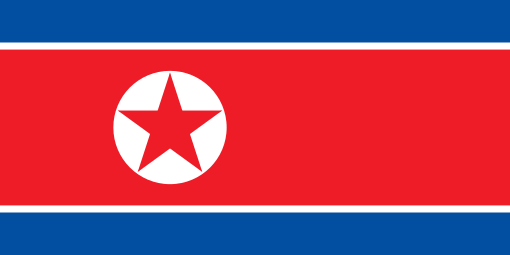What has Happened:
On April 21st, U.S. intelligence indicated that it believed North Korean dictator Kim Jong Un underwent cardiovascular surgery on April 12th. There are also reports that he may be incapacitated. These reports have been denied by South Korea and officials there have stated that they have not seen any unusual activity in North Korea. Kim’s last public appearance occurred on April 11th and he was noticeably absent during the April 15th national holiday celebrating the birth of Kim’s grandfather and founder of North Korea, Kim Il Sung. Information flow out of North Korea regarding the Kim family is limited and there have been rumors in the past about Kim’s health – in 2014, he was not seen publicly for a month, then he resurfaced with a cane following reports he had a cyst removed from his ankle.
Why it Matters:
North Korea is believed to have between 20-30 nuclear weapons in addition to a highly capable and well-equipped conventional military. And, while President Trump and Kim have met and tried to make progress in denuclearization, North Korea has threatened its neighbors and the U.S. with it’s ballistic missiles, in addition to continued cyber-attacks. As U.S. intelligence watches the situation unfold, it makes sense to think about some of the potential outcomes if the most extreme scenario, i.e. the death (or long-term incapacitation) of Kim were to occur. Our Geopolitical Intelligence Group, led by General James “Spider” Marks, who spent a significant portion of his Army career on the Korean Peninsula focused on North Korea, weighs in on what some of the warning signs could be and what we might expect if these reports prove to be true.
We start with General (ret.) Marks who explores some of the potential considerations in the succession process:
- South Korea downplaying the situation is reason to be worried – they are concerned about this.
- ROK President Moon’s goal is a unified Korea, however unlikely, and wants to maintain calm.
- This is not like 2011 when Kim took over from his father when he passed away; there had been 3 years to prepare for that transition after his father’s stroke.
- Possibility that this is COVID-19 related, i.e. Kim contracted it from one of his foreign medical providers post-operation.
- Warning signs of impending transition, even a peaceful one, could include increased U.S. Naval presence, i.e. a U.S. carrier off both Peninsula coasts and the U.S. long-range bomber force on alert in Guam.
- If a transition of power (temporary or permanent) will occur, options include:
- Kim has a 10-year-old child (a daughter), but not confirmed. She’s not a successor.
- Kim’s brother Kim Jong Chol is not a leader and did not get the “dictator” gene. Kim’s half-brother, who was murdered, also has a son in Kim’s bloodline, but also unlikely.
- Kim’s sister Kim Yo Jong is capable, but has limited public/governance exposure. She is likely a temporary (or permanent) successor to maintain the dynasty, i.e. the “Mount Paektu Bloodline.”
- If Kim’s sister is more of a permanent solution, a purge of all enemies of the Kim family would begin soon after the transition.
- Military is controlled by the Korean Workers’ Party. They will remain loyal to the Kim family.
- No immediate concern about the safety of WMDs unless the Korean Workers’ Party fractures due to some other factor, i.e. COVID-19 starts killing a number of them.
- Ruling party elites will not walk away into uncertainty. If they did, total chaos would ensue. Initially, average North Koreans would freeze in place and then head south.
- China not likely to intervene unless something goes horribly sideways – i.e. with COVID-19 fallout, they will keep to themselves unless the regime fractures and South Korea steps in to try to unify.
General (ret.) Stewart, who was the former Director of the Defense Intelligence Agency, explores some of the potential questions we must consider and be prepared to address:
- Uncertainty about Kim’s condition equals instability in the region. Instability in the age of COVID-19 increases volatility.
- The standard questions begin: who could succeed Kim, his sister has played an increasingly public role, but could she really take on the strong men of North Korea and sustain the Kim dynasty?
- How would a regime change (in the event of Kim’s death) play itself out? Civil war? One strong man emerges and continues the Kim approach? Who are likely candidates and what do we know about them?
- How would the international relationship change – China, South Korea, Japan, Russia, the U.S.?
- Could we see a run for the border north or south if the North Koreans see this as an opportunity to escape? Would they even know if there was an opportunity?
- What would a heavy refugee/migration movement do to the economies of China and South Korea considering the impact of COVID-19?
- Who controls the WMDs?
- Who is best-positioned to take advantage of the uncertainty? What should the U.S. position be, i.e. how do we maximize our position during the next few days/weeks/months?
Bottom Line:
If a change of control were to take place in North Korea, the ripple effects would have global consequences. Our Geopolitical Intelligence Group will continue to monitor the situation closely and look for potential warning signs of the regime preparing for a leadership change and what that could mean for the U.S. and the region.
Original Post 04/21/2020


